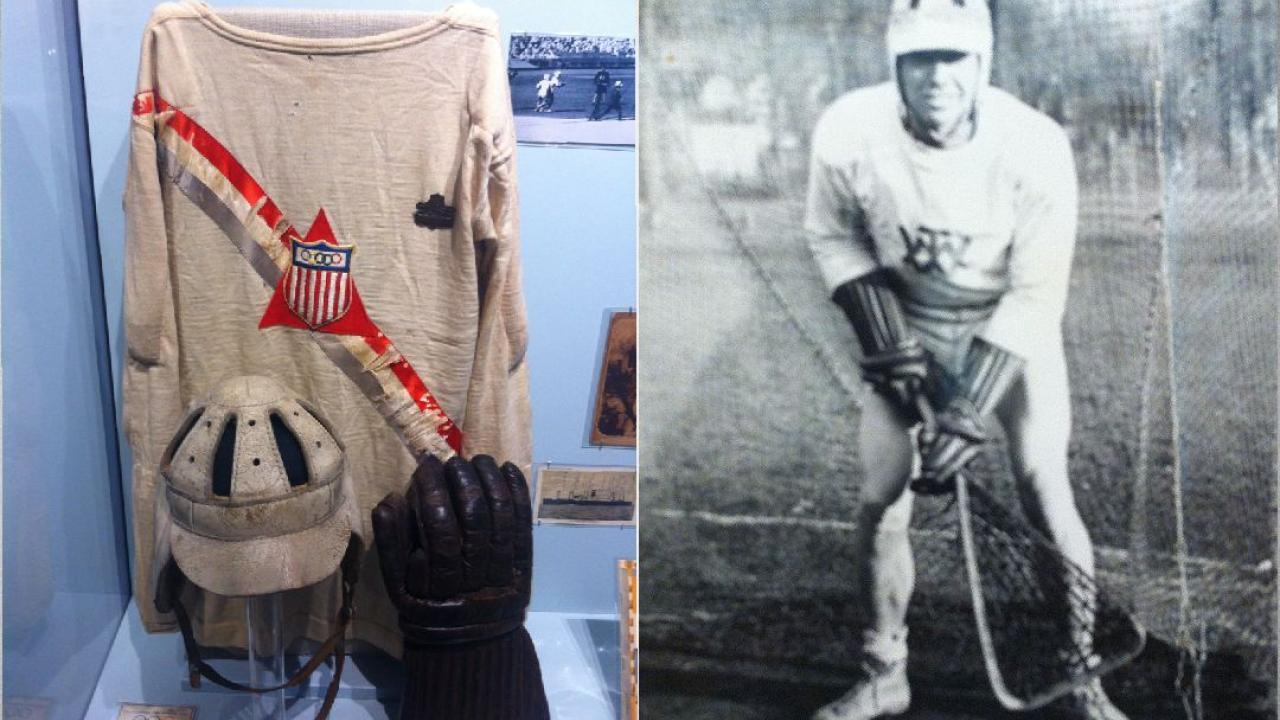
Finn’s Finds: Wearing the Red, White and Blue in 1932
When lacrosse returns to the Olympic Games in 2028, it will be the first time since 1908 that lacrosse appears as an official Olympic sport.
However, the sport does have a history with the Olympic Games beyond that year. Lacrosse appeared in multiple Olympics as a demonstration sport — usually native to the host country included to promote its appeal — in 1928, 1932 and 1948.
Joe Finn serves as archivist for USA Lacrosse and the National Lacrosse Hall of Fame and Museum, a role he has held since 1998. As a lifelong Baltimore-area resident, Finn first caught the lacrosse bug in high school and has combined his love for the game and his love of history into becoming one of the foremost authorities on lacrosse. We are republishing this article in light of Monday’s news.
Spurred in part by last summer’s Olympic Games in Rio, there has been renewed interest among many lacrosse enthusiasts in having the game they love become a part of the world’s largest sporting stage. It may surprise some folks to know that if that happens, lacrosse would be returning to the Olympics rather than making a first-time appearance.
Men’s lacrosse has been played at five Summer Games — as a medal sport in 1904 in St. Louis and 1908 in London and as a demonstration sport in 1928 in Amsterdam, 1932 in Los Angeles and 1948 in London.
Only two nations participated in 1932, Canada and the United States, after England and Australia bowed out due to financial burdens. The teams played a three-game series, with the U.S. prevailing, two games to one. Each game was played in the main Olympic stadium, the Los Angeles Memorial Coliseum, in front of impressive crowds that totaled 145,000 for the three-game series.
The first game in the series, on Aug. 7, was played while the Coliseum crowd, estimated to be in excess of 80,000 that day, awaited the finish of the marathon race, won by Argentina’s Juan Carlos Zabala.
As intense as the Olympic series was, the precursor — an eight-team national playoff to earn the right to represent the United States — is just as noteworthy. While the event featured a number of dramatic contests and some high-level lacrosse, it was not without controversy.
The American Olympic Lacrosse Committee (AOLC) had organized a six-team tryout tournament in 1928, won by Johns Hopkins, which earned the nod as the U.S. representative in Amsterdam. Based on the financial success of that 1928 qualifier, which reportedly netted $19,000 for the Olympic fund, the AOLC decided to increase the tryout field to eight teams in 1932 in hopes of generating additional funds to help support the Olympic squad.
In a 1984 interview with Baltimore’s News American, team member Jim Merriken stated, “The thing I distinctly remember is there was some question if we would even make the trip. The great world depression was upon us and there was a lack of money for expenses.”
The AOLC awarded tournament berths to Army, Navy, Johns Hopkins, St. John’s, Maryland, Mount Washington, Rutgers and, amid some debate, an all-star team from the Iroquois Six Nations. Scheduling conflicts forced both Army and Navy to withdraw from the tournament, with the organizers then inviting Syracuse and the Crescent Athletic Club as replacements.
Played on three consecutive weekends in June, the tournament was initially divided along geographic lines, with the opening doubleheader in New York City yielding wins for the Crescents over Six Nations and Rutgers over Syracuse. In the south, Maryland defeated Mount Washington and Hopkins edged St. John’s in opening round match-ups.
Unfortunately, gate receipts failed to meet the AOLC’s expectations. The opening doubleheader in New York drew only 1,200 people, and the semifinal games, played in Baltimore on a rainy day, managed to attract only 500. A more representative crowd of 5,000 turned out for a thrilling Johns Hopkins vs. Maryland final one week later, but even that number disappointed the AOLC.
In the championship game, Hopkins took an early two-goal lead, but Maryland rebounded for a 3-2 advantage at halftime. Hopkins’ team captain Jack Turnbull scored twice to keep the Jays close in the second half, before Don Kelly scored the game-winner and an insurance goal for Hopkins, both in the final three minutes.
With disappointing attendance, public contention about including the Iroquois squad, outcries against the corruption of the amateurism concept and lackluster financial figures, the 1932 tournament was met with mixed reviews and, in some quarters, significant criticism.
In fact, The Baltimore Sun argued that the whole event had been unnecessary and deemed it simply as an “unabashed gate receipts racket.” The paper noted that since Johns Hopkins had finished undefeated during the regular season, it should have been rewarded as the U.S. representative without having had to endure the hardship of a qualifier.
“I think that was really more of a provincial argument, because people like to resist change,” Finn said. “You don’t always know who the best team really is, so I think the playoff was a good idea.
“As for the notion that the playoff was simply a money grab, the reality is that it takes money to support an Olympic team, and that money has to come from somewhere. Finances are an issue, even in the best of circumstances, and the national economy in 1932 was certainly not the best of circumstances.”
Goalie Fritz Stude is one of eight National Lacrosse Hall of Fame members from the 1932 Olympic team. His jersey, helmet and goalie’s glove are part of the Olympic exhibit in the national museum.
“There were some really talented players on that team,” Finn said. “They were good.”
Lacrosse made one final appearance in the Olympics in 1948, once again as a demonstration sport. Only two nations, the United States and Great Britain, attended and played a single match at Wembley Stadium that ended in a 5-5 draw. That year, the United States Intercollegiate Lacrosse Association selected Rensselaer Polytechnic Institute (RPI) to serve as the U.S. representative, provided that RPI would handle all financing for the trip. No playoff qualifier was played.
Paul Ohanian
Paul Ohanian has worked at USA Lacrosse since 2006 and is currently the senior manager of program content. Prior to joining USA Lacrosse, he served as SID at a Division III school with a strong lacrosse tradition and learned to appreciate the commitment and passion that athletes at all levels bring to the game.

Categories
Tags
Related Articles




